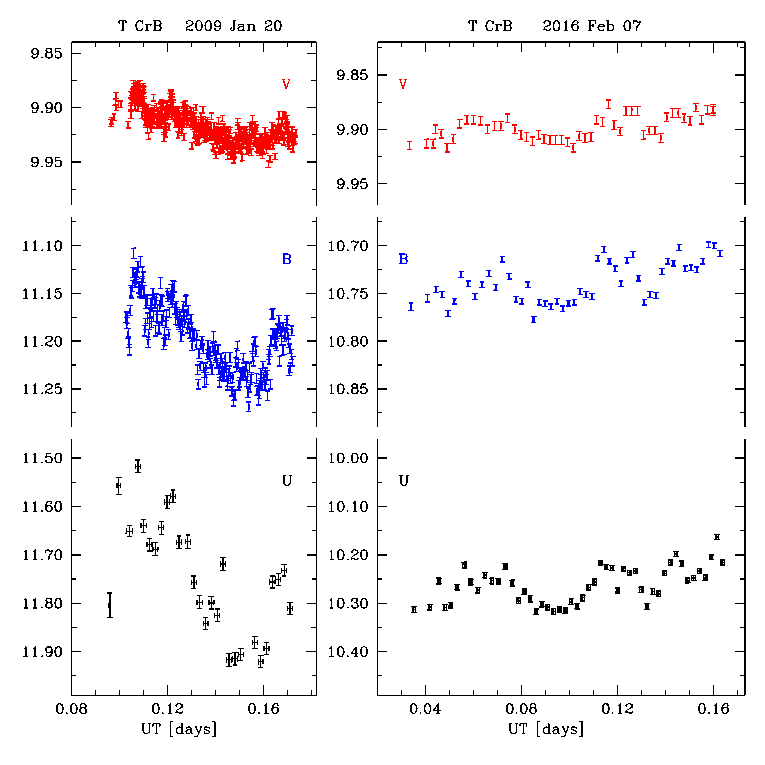
UBV observations of the flickering
of T CrB
ATel#8675
February 11, 2016
R. Zamanov, E. Semkov, K. Stoyanov
(Institute of Astronomy and NAO, Bulgaria) & T. Tomov
(Nicolaus Copernicus University, Torun, Poland )
In 2015 the recurrent nova T Coronae
Borealis has entered a super-active state (Munari, Dallaporta &
Cherini, 2016, NewA, in press).
On February 7, 2016, we observed
the flickering of T CrB in three filters (UBV) using the 50/70 cm
Schmidt telescope of the National Astronomical Observatory Rozhen
(Bulgaria). The total amplitude detected was about 0.16 mag in U,
0.08 in B, and 0.04 in V band. In the table are given as follows: the
band, UT-start and UT-end of the run, exposure time, number of CCD
images obtained, minimum, maximum and average magnitudes in each
band, standard deviation of the mean, typical observational
error.
The data can be downloaded from
http://www.astro.bas.bg/~rz/TCrB/
A comparison with our previous observations shows that
the brightness increased with 1.5 mag in U. Surprisingly, the
flickering amplitude decreased by a factor of 2 in U and B
bands. In
2009 the flickering amplitude in U was not less than 0.30 mag,
while now is less than 0.10 mag.
Our observations confirm the increase of the brightness in U and B
bands and that T CrB is in active state.
We encourage further multiwavelength
observations.
|
date |
UTst-end |
exp |
Npts |
min |
max |
average |
stdev |
err. |
|
band |
h:mm-h:mm |
[sec] |
|
[mag] |
[mag] |
[mag] |
[mag] |
[mag] |
|
7.02.2016 |
|
|
|
|
|
|
|
|
|
U |
0:49-3:57 |
120 |
50 |
10.163 |
10.318 |
10.262 |
0.038 |
0.006 |
|
B |
0:49-3:54 |
30 |
50 |
10.699 |
10.777 |
10.738 |
0.021 |
0.003 |
|
V |
0:48-3:53 |
10 |
51 |
9.877 |
9.917 |
9.898 |
0.011 |
0.004 |
